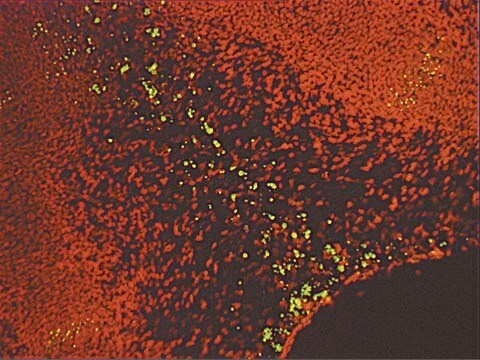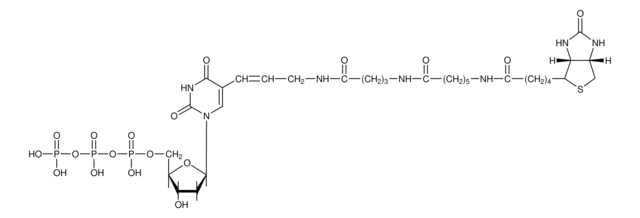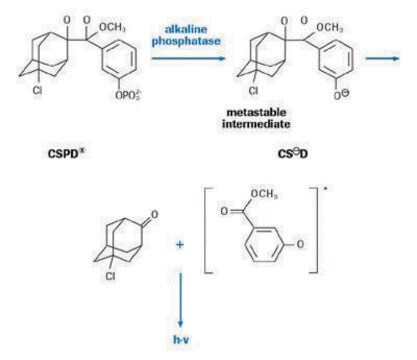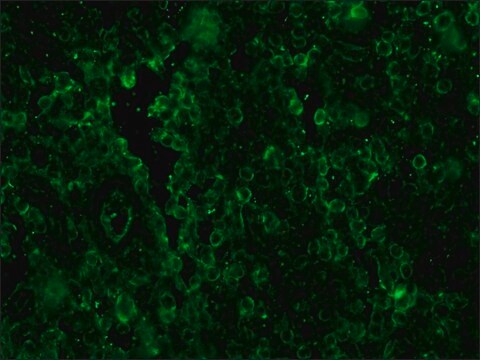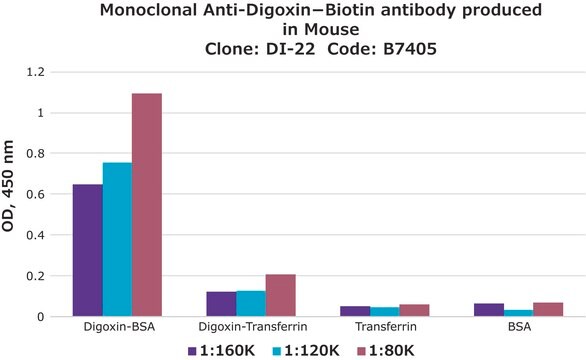11207741910
Roche
Anti-Digoxigenin-Fluorescein, Fab fragments
from sheep
Sinônimo(s):
anti-digoxigenin, digoxigenin
About This Item
Produtos recomendados
fonte biológica
sheep
Nível de qualidade
conjugado
fluorescein conjugate
forma do anticorpo
purified immunoglobulin
tipo de produto de anticorpo
primary antibodies
clone
polyclonal
Formulário
lyophilized
embalagem
pkg of 200 μg
fabricante/nome comercial
Roche
Isotipo
IgG
temperatura de armazenamento
2-8°C
Descrição geral
Especificidade
Aplicação
- Digoxigenin-labeled sugars in glycoconjugate research
- Fluorescent in situ hybridization (FISH)
- Immunohistocytochemistry
- In situ hybridization
Nota de preparo
- Working concentration: Working concentration of conjugate depends on application and substrate. The following concentrations should be taken as a guideline:Detection of digoxigenin-labeled sugars in glycoproteins: 50 to 20μg/ml
- Fluorescent in situ hybridization (FISH): 1 to 20μg/ml
- Immunohistocytochemistry: 20 to 50μg/ml
- In situ hybridization: 20 to 50μg/ml
The anti-DIG anitbody is highly specific and sensitive. Therefore, for FISH, a concentration of 1μg/ml is sufficient, and only in case of critical probes, this concentration may be raised to <10μg/ml (with a distinct background to be expected).
Working solution: Reconstitution
Add 1 ml double-distilled water to a final concentration of 200μg/ml.
Blocking:
PBS, 0.5% bovine serum albumin (w/v), pH 7.4.
1% Blocking reagent (w/v), 1 to 5% heat inactivated fetal calf serum (v/v) or sheep normal serum can be used for reduction of unspecific binding. Furthermore, pH can be increased up to pH 8.5 to 9.0.
Storage conditions (working solution): Always prepare fresh!
Reconstituição
Outras notas
Não está encontrando o produto certo?
Experimente o nosso Ferramenta de seleção de produtos.
Palavra indicadora
Warning
Frases de perigo
Declarações de precaução
Classificações de perigo
Aquatic Chronic 3 - Skin Sens. 1
Código de classe de armazenamento
13 - Non Combustible Solids
Classe de risco de água (WGK)
WGK 2
Ponto de fulgor (°F)
does not flash
Ponto de fulgor (°C)
does not flash
Escolha uma das versões mais recentes:
Já possui este produto?
Encontre a documentação dos produtos que você adquiriu recentemente na biblioteca de documentos.
Os clientes também visualizaram
Artigos
Digoxigenin (DIG) labeling methods and kits for DNA and RNA DIG probes, random primed DNA labeling, nick translation labeling, 5’ and 3’ oligonucleotide end-labeling.
Nossa equipe de cientistas tem experiência em todas as áreas de pesquisa, incluindo Life Sciences, ciência de materiais, síntese química, cromatografia, química analítica e muitas outras.
Entre em contato com a assistência técnica


